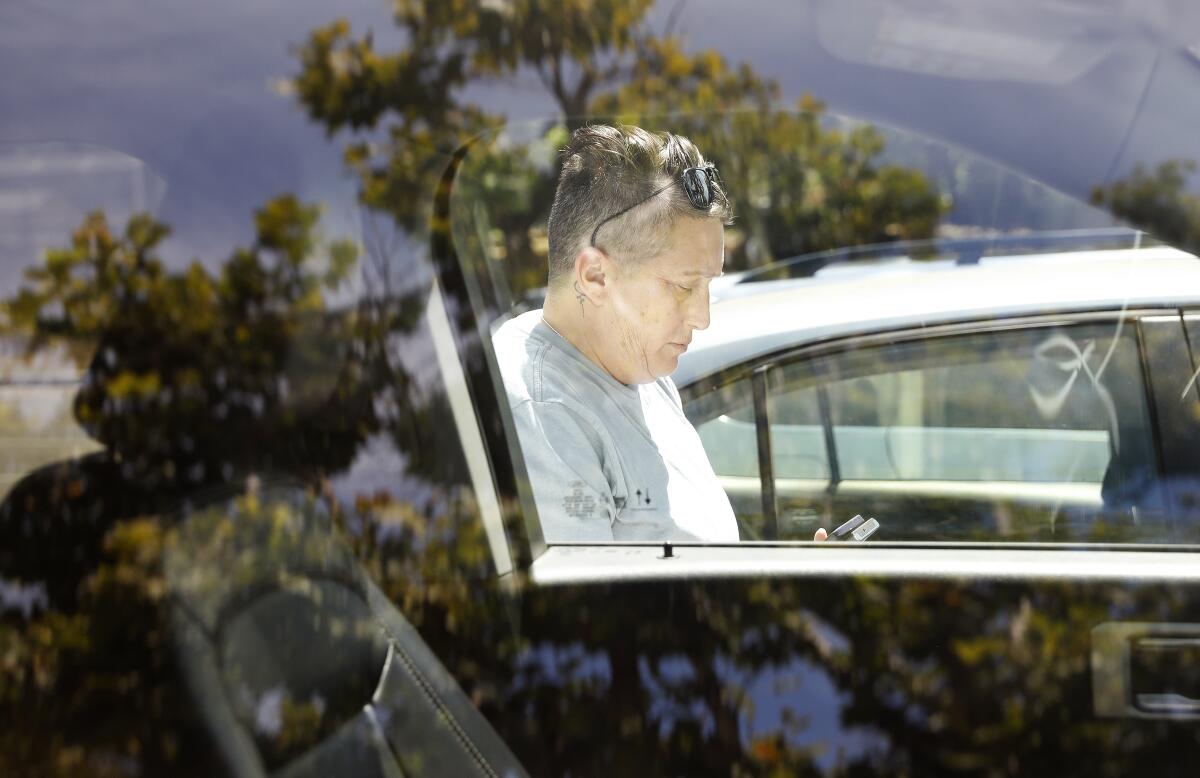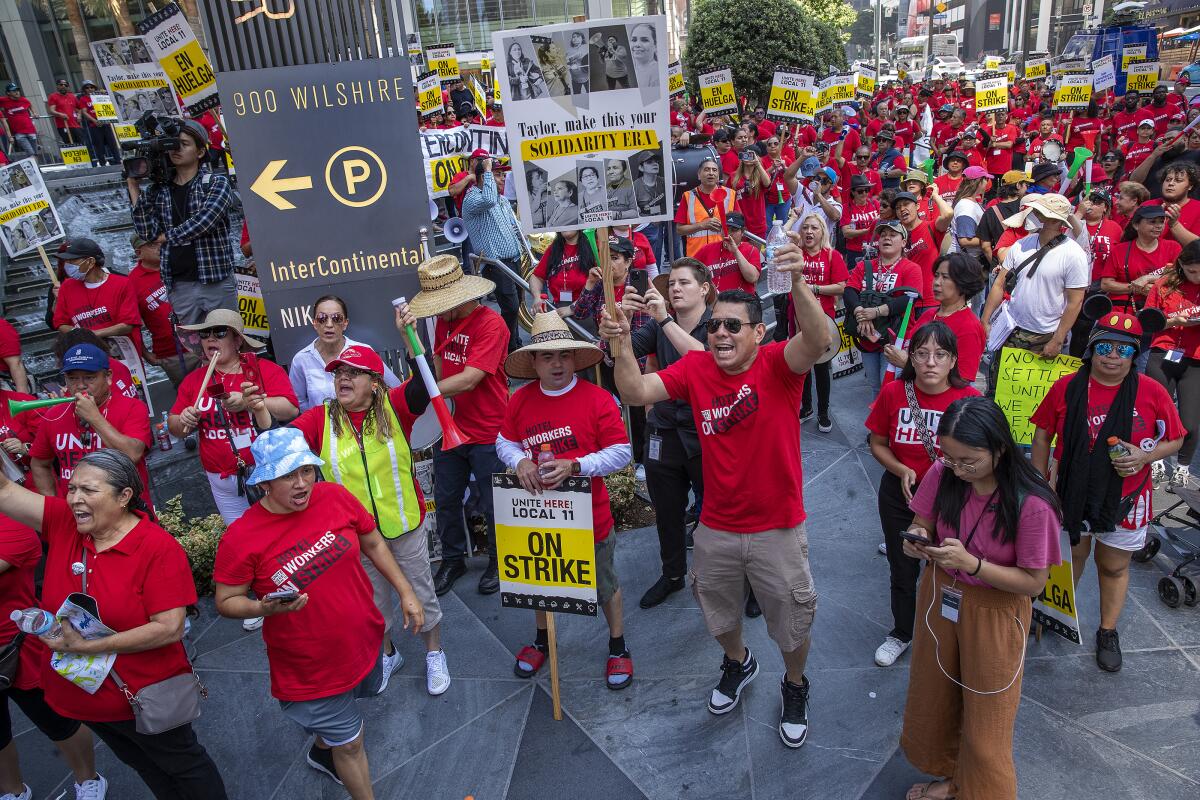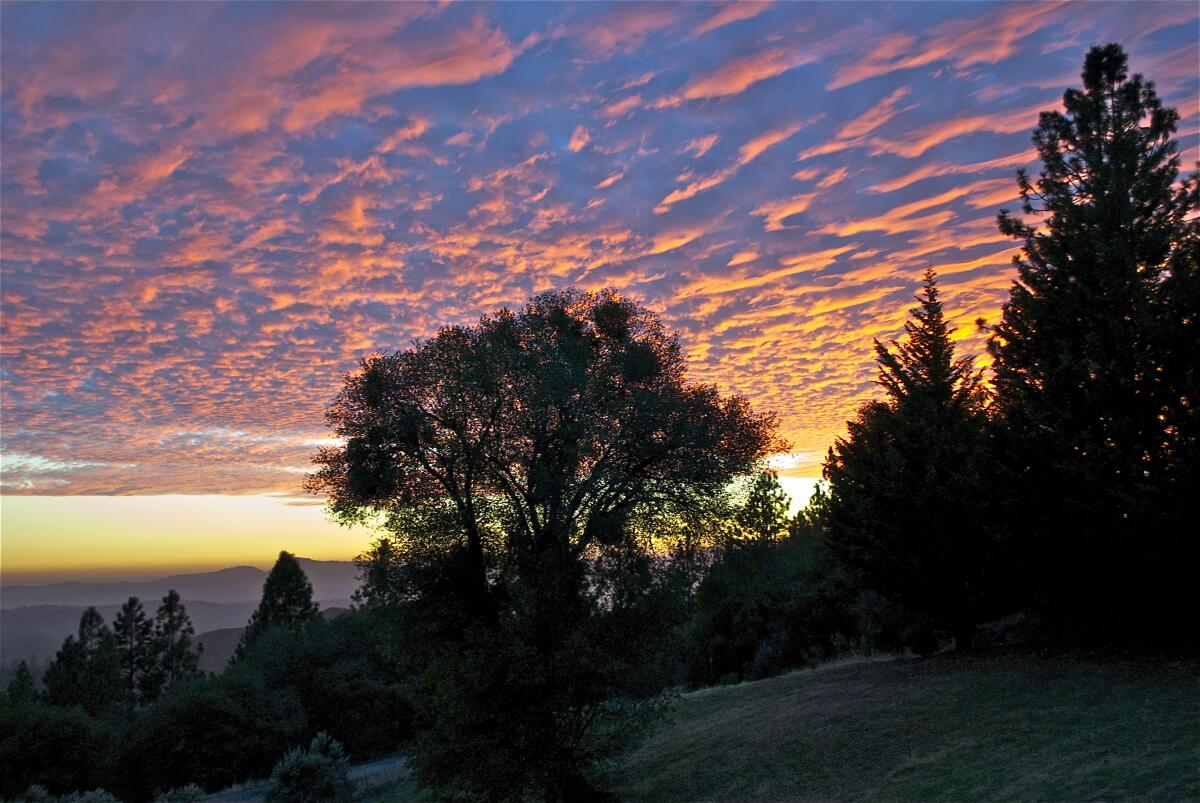Meet a private contractor helping families find their loved ones on L.A.’s streets

- Share via
Good morning, and welcome to the Essential California newsletter. It’s Tuesday, Aug. 8. I’m Thomas Curwen, a reporter specializing in long-form narratives.
Having written extensively about homelessness and mental illness for The Times, I have grown accustomed to coverage, including my own, that focuses on the efforts of state, county and municipal efforts to address a crisis that has come to define life in Los Angeles.
Agencies, popularly known by acronyms like some sort of alphabet soup, often take the lead trying to help individuals living on the streets, or suffering from schizophrenia or other psychotic disorders. As informed and as compassionate as the workers in this field are, they are also constrained by the law and overwhelmed by the numbers.
The most recent homeless count estimates more than 75,000 people are living in interim housing or a tent, car, van, RV or makeshift shelter in Los Angeles County. Just over 27,000 have been homeless for more than a year with a disabling health, mental health or substance use condition. The numbers are stunning, but what I found most disheartening is that they are increasing.
So when I learned about Vicki Lucas’ work helping families with children caught up in the vicious cycles of addiction, psychosis and homelessness, I was intrigued. I had never heard of an interventionist who specializes in mental illness, let alone one who works on the streets with no allegiance to homeless agencies or health departments. I imagined a reality-television bounty hunter — only more altruistic.
Diving deeper into this world, I discovered a cottage industry, fueled by the law of supply and demand; lying outside sanctioned public channels; and aimed at desperate families who could afford to pay for private services to find their child and navigate the complexity of the behavioral healthcare system.
I spoke to a few of these parents. Living with the fear that their child might die on the street, they expressed profound frustration toward the status quo. (With the exception of Sherry Hill, they requested anonymity; their relationship with their child remained a fragile balance between trust and betrayal.)
They recounted phone calls to hospitals, to police departments and county agencies that had gone nowhere. Their children, they said, knew how to outsmart the system, hiding symptoms during interviews, proving they were not in imminent danger to themselves or others.
Lucas, however, took a more dedicated and strategic approach than these agencies. She first met the child on the street and tried to secure a voluntary commitment. If that failed, she put the elements in place for her intervention: a treating psychiatrist, a hospital bed, insurance and a detailed mental health history so that when crisis teams arrived, they would know what they were up against.
Lucas also recognized that sometimes waiting for the most unsettling symptoms of the disorder to emerge — the disturbing swirl of delusion and paranoia — often brought the best results.
Was the work ethical? I spoke with mental health experts who had no problem with Lucas’ approach. They offered a few buyer-beware caveats but saw no evidence of vigilantism. Lucas was not ordering involuntary commitments but merely helping those who were qualified by law to make that determination. If someone wanted to pay for this help, it was certainly their prerogative.
In the course of my reporting, I joined Lucas on three occasions in Pasadena as she searched for Sherry Hill’s daughter. Walking the sidewalks and talking with those living on the street, I felt a parent’s profound desperation to help their child no matter what. Far too thin a line exists between homelessness, addiction, incarceration and death.
Later, I spoke to one family who with Lucas’ help had gotten their child needed medication, therapy and temporary housing, so that today, just months after the intervention, early signs of success — commitment to treatment, medication compliance, a part-time job — are in place. They had nothing but appreciation and gratitude for her work.
There is no saying that Sherry Hill’s daughter will experience the same outcome. I certainly hope so.
You can read my story on Lucas here.
And now, here’s what’s happening across California from Ryan Fonseca:
Note: Some of the sites we link to may limit the number of stories you can access without subscribing.
L.A. (LABOR) STORIES

The union representing SoCal hotel workers says its members and supporters are being attacked on the picket lines. They point to security guards employed by local hotels and filed a complaint with the National Labor Relations Board. Los Angeles Times
Speaking of strikes, thousands of L.A. city workers are set to kick off a 24-hour strike today, which is expected to disrupt a vast array of services across the city. The union representing traffic officers, custodians, lifeguards, sanitation workers and many more workers is alleging unfair labor practices from city management amid a contract negotiation. Los Angeles Times
HOUSING
Affordable housing providers across California are reporting sharp hikes in their insurance premiums. Some fear that the trend seriously threatens the state’s ability to build enough to meet its ambitious affordable housing goals. KQED
A popular gathering place in San Francisco’s Hayes Valley neighborhood was supposed to be only a placeholder for a permanent affordable housing development. Now more than a decade later, city officials are taking steps to make that happen as some residents push back. San Francisco Chronicle
Support our journalism
ENVIRONMENT, ENERGY AND SCIENCE
Authorities are investigating what caused two firefighting helicopters to collide in midair while responding to a blaze in Cabazon on Sunday. One chopper crashed, killing three men, while the other landed safely. Los Angeles Times

Are you prepared for a blackout? With high heat, high energy demand and an aging power grid making the risk more and more likely, here are some ways Californians can gear up to keep their lights on. Los Angeles Times
A newly released study found that California’s “undergrounding” approach disproportionately burdens lower-income communities. Fire-prone power lines are buried underground more often in wealthier areas, leaving lower-income neighborhoods with more overhead lines on wooden poles, increasing the risks to fire and power outages. The Hill
NASA scientists aren’t just looking out into space — they’re also keeping an eye on California’s vineyards, using a technique to spot wine grape disease. That could help alert growers to the disease early, saving harvests — and potentially billions of dollars. The Sacramento Bee
CALIFORNIA CULTURE
The Perseid meteor shower will hit its peak on Aug. 13. Here are some ideas to escape light-polluted Los Angeles and view the cosmic light show without having to drive too far. Los Angeles Times
A SoCal teen shredded her way to victory at this year’s U.S. Open of Surfing in Huntington Beach. San Clemente’s Sawyer Lindblad, 17, was the only local, non-Hawaiian winner at the nine-day competition. 🏄♀️ The Orange County Register
Free online games
Get our free daily crossword puzzle, sudoku, word search and arcade games in our new game center at latimes.com/games.
AND FINALLY
Today’s California landmark is from Dean Santner of Mountain Ranch: his slice of Sierra Gold Country, seen here around golden hour.

Dean writes:
Perhaps our region may not qualify as an official “California Landmark,” but it is a very beautiful and important historical area of California. Populated by many thousands of gold seekers in the mid-1800s, the lesser number of us who are currently fortunate enough to enjoy living and working here appreciate the neighborly cooperation, quiet solitude and stunning landscapes we are fortunate enough to enjoy every day.
What are California’s essential landmarks? Fill out this form to send us your photos of a special spot in California — natural or human-made. Tell us why it’s interesting and what makes it a symbol of life in the Golden State. Please be sure to include only photos taken directly by you. Your submission could be featured in a future edition of the newsletter.
Please let us know what we can do to make this newsletter more useful to you. Send comments to [email protected].
Sign up for Essential California
The most important California stories and recommendations in your inbox every morning.
You may occasionally receive promotional content from the Los Angeles Times.




